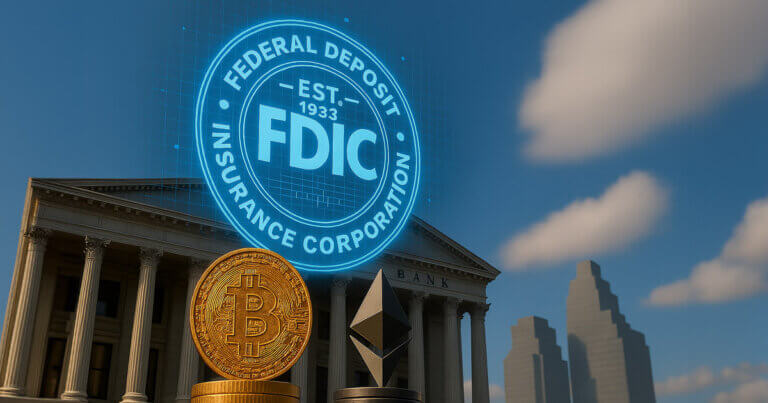The U.S. Federal Deposit Insurance Corporation (FDIC) is developing a more relaxed and transparent framework for U.S. banks to participate in crypto asset activities, including the use of public, permissionless blockchains.
On April 8, FDIC Acting Chairman Travis Hill spoke at the American Bankers Association’s Washington Summit, outlining the agency’s evolving stance on Crypto-related activities.
Guidelines for interacting with public blockchains
One of the key areas under review concerns the interaction between regulated banks and public, permissionless blockchains.
Hill acknowledged that while jurisdictions outside the United States have allowed banks to use public blockchains for years, U.S. banking regulators have been more cautious.
The FDIC now believes that a blanket ban on the use of public blockchains is too strict. However, Hill stressed the need for appropriate safeguards to regulate such activities.
The agency is evaluating existing interagency guidance, including joint statements issued in January and February 2023, to develop lasting standards for responsible use of public networks.
The question of whether public blockchains can operate in a permissioned model is also under consideration. Hill said regulators must evaluate how to define and regulate blockchain configurations that blur the line between open and permissioned environments.
FDIC to issue further guidance
The FDIC said it intends to issue more guidance targeting specific digital asset use cases.
Hill said the agency will continue to evaluate outstanding issues related to the scope of crypto-related activities, the regulatory treatment of blockchain-based products, and risk management expectations for banks operating in this space.
The broader goal is to establish a consistent and transparent regulatory framework that promotes innovation while ensuring compliance with safe and sound standards.

Hill recently noted that the agency’s revised guidance represents a fundamental shift in the treatment of crypto assets and blockchain technology within the U.S. banking system.
He highlighted that the FDIC has rescinded its previous requirement for regulated institutions to notify the agency before engaging in digital asset and blockchain activities.
Stablecoin Regulation and Deposit Insurance Framework
Hill also touched on the emerging issues surrounding stablecoins, particularly the legislative movement proposed by Congress.
The FDIC is reviewing potential updates to the pass-through deposit insurance regulations to clarify eligibility requirements for stablecoin reserve deposits. Key issues being evaluated include liquidity risk management, safeguards against illicit finance, and cybersecurity standards.
In 2020 and 2021, the U.S. Office of the Comptroller of the Currency (OCC) determined that national banks could provide a number of Crypto-related services, such as stablecoin custody and issuance, participation as blockchain validation nodes, and acceptance of stablecoin-related deposits.
The FDIC is now considering whether to further clarify the boundaries of permissible activities in this area or expand its supervisory guidance to cover more use cases.
Tokenized deposits and smart contract risks
The speech also stressed the need for clearer regulatory treatment of tokenized real-world assets and liabilities, including tokenized commercial bank deposits. Hill said the FDIC believes that “a deposit is a deposit, regardless of the technology or recordkeeping method used.”
However, he expressed concern about the ability of counterparties to use smart contracts to withdraw funds at par following a bank failure, which could increase clearing costs if there were no safeguards to prevent such outflows.
That concern is driving efforts within the FDIC to evaluate technological solutions to prevent unexpected outflows of funds in a bank resolution scenario.
The challenge, Hill noted, is aligning on-chain programmability with traditional regulatory protections designed to ensure the orderly liquidation of failed institutions.
The changes mark a formal move by the FDIC toward providing regulatory clarity for banks exploring digital asset infrastructure, while emphasizing the need for careful risk controls and further clarity on permitted activities.
















